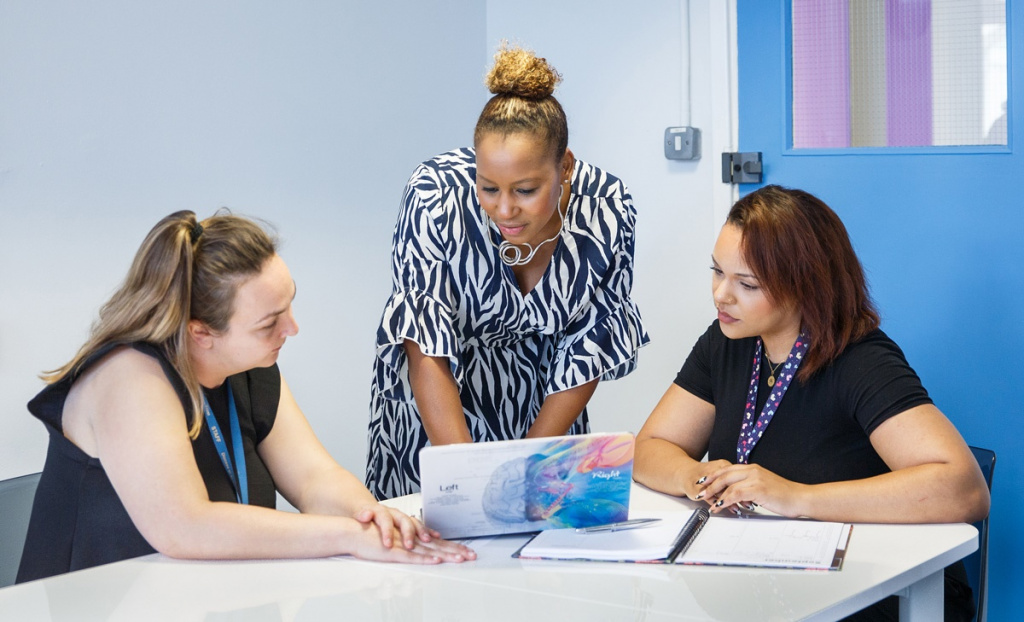Supercharge Your School Leadership Team By Sharing Planning And Practice

In 2018, I worked on a project to evaluate the effectiveness of an initiative that had been introduced by a local high school to reduce teacher workload. The outcomes took two forms – a report presented to the Department for Education[1] and an article published in an education magazine.[2]
In terms of the latter, my co-writers and I demonstrated how the shared planning response that the school had pioneered offered a range of attractions. We went on to suggest a set of questions to give to schools, the aim being to put together a workload action plan that would be unique to them and tailored to their particular circumstances.
More recently, I have turned my attention to another collaborative solution that can cut the time taken by teachers in planning their lessons – the sharing of practice – and how it can be implemented without requiring individual staff to reinvent the wheel.
The suggestions here arose originally from my concern that it is all too easy for the excellent practice of teachers who educated us as students in the past to become lost over time. To prevent such waste and help others, I prepared an ordered typology that reflected how I had put to use with my EPQ candidates the best teaching I had received when I studied A-level.[3] It soon became apparent that what I had devised could be reoriented to provide a structure for thinking whereby teachers could learn from their professional colleagues and apply their ideas in their own classrooms.
In sum, the typology may be set down as follows:
- Restatement – the simple reiteration of one or more teaching points, explanations, etc. delivered by the original practitioner;
- Imitation – the modelling of an outcome or skill to be inculcated in the students in a way identical or at least very similar to that which has been demonstrated by a professional colleague;
- Adoption – the implementing of strategies (e.g. for learning or improving student behaviour) already practised by a colleague;
- Re-enactment – the recreation of an existing activity, with no or minimal modification;
- Recontextualisation – the application of one or more teaching points in a situation that differs significantly from that in which they were introduced by another teacher;
- Revision – the substantial development of a task that has already been staged by another party, usually in terms of extending it;
- Synthesis – the construction of a new activity or product, with the ideas of the original teacher forming the raw material.
Many readers will no doubt already deploy some of these strategies, albeit perhaps more instinctively and casually than the formality of the analytical abstractions here implies. The early processes are largely self-explanatory but the last, especially, merits clarification via an example.
Let us imagine that a teacher has seen how students frequently struggle to formulate effective research questions when required to do so in independent learning assignments. After borrowing a list of essay questions that a colleague has set their own students over the past academic year, the teacher creates a table to categorise them by their inherent characteristics. Immediately, two benefits arise – the linguistic and structural characteristics of a sound research question can be made apparent and the higher-level thinking skills such a question should demand may be rendered explicit.
The seven processes outlined above are arranged in an ascending hierarchy and their sequencing reflects the degree of novelty inherent in what was done by the second teacher. The first four types are concerned almost exclusively with repeating the work of someone else; the last three involve an increasing degree of original thinking on the part of the second person. The overall progression largely mirrors Bloom’s Taxonomy[4], with the early parts having much in common with the Taxonomy’s low-level cognitive skills associated with knowledge, e.g. the recall of information, and the later actions reminiscent of Bloom’s higher-order processes.
Although any teacher may benefit from learning about the effective practice of a colleague and either apply it in some way themselves or derive new understanding from it, the typology may be especially relevant to trainee or newly qualified teachers. These teachers will be more concerned than most with simply finding their feet and so will likely be willing to take a lead from good role models before forging their own identities as professionals. At the upper levels, the actions provide a safety net of sorts, with the ever-growing freedom allowing the individual to make their own way while still ensuring that their work remains solidly grounded.

The 2018 article mentioned earlier highlighted a range of benefits that could result from shared planning – notably, savings in staff time, better teamwork, improved lessons and resources and greater uniformity of practice within a school. The strengths of the techniques listed in the typology here are similar, though consistency in teaching will obviously diminish in the upper reaches.
It may be said that whereas shared planning will be limited to within subject teams, the sharing of practice can take place on a more extensive level – throughout a school and even beyond it – certainly where generic matters, such as teaching strategies, are concerned.
It is appropriate, however, to acknowledge some caveats. In particular:
- What has been proposed in this piece presupposes that teachers naturally engage conversationally with their colleagues or are happy to be observed by them; it is less helpful to teachers of a more solitary disposition, professionals who may be wary of others or insecure, or staff who simply prefer to plough their own furrow;
- Unless the teacher observes the lesson in which the material was used originally or their colleague gives them an honest appraisal of what took place, they are unlikely to know how the session that first included the relevant idea(s) was received by the students and where sensible adjustments may be made;
- If a youngster is part of both the relevant teaching groups, i.e. that in which the material was first used and then the group in which it was reapplied by another member of staff, there is an obvious danger of duplication in the student experience.
The typology presented here is the result of extensive personal reflection and discussions with others but no claim can be made that it is in any way comprehensive. Indeed, readers may well be able to immediately identify additional ways in which they have drawn on the ideas of professional colleagues and are in a position to make appropriate revisions to the typology. Broadly, so as to render the framework more helpful in their own school, they may see value in:
- Rewording the labels applied here so that they are more meaningful to their intended readers;
- Embellishing the individual definitions by elaborating on them or providing examples;
- Adding extra processes;
- Making explicit connections between the different actions, recognising their similarities and contrasts.
Perhaps the most fundamental challenge for school leaders lies in determining the most effective use of the typology. It may, for example, be employed descriptively in the sense of communicating the different ways in which practice is shared within their school – and so inform new or trainee teachers especially – or indicatively in demonstrating the wide range of possibilities that could be available to staff. The decision made on the typology’s use will reflect the underlying purpose that the tool can best serve.
Andrew K Shenton is a freelance researcher and writer who currently works as part of the support staff at Whitley Bay High School.
References
- Ellis, G., Bell, P., Buckle, L., Sherlaw, A. and Shenton, A.K. Reducing Teacher Workload: Research Report into Shared Planning. Department for Education, 2018. Report by Whitley Bay High School, URL: https://www.gov.uk/government/uploads/system/uploads/attachment_data/file/687206/Whitley_Bay_High_School_-_Reducing_teacher_workload.pdf
- Shenton, A.K., Sherlaw, A. and Ellis, G. Shared teacher planning. SecEd, 498, 4 January 2018, pp. 8-9.
- Shenton, A.K. Delving deep into the memory: exploiting our inner resources. School Library Association. 23 May 2022. URL: https://www.sla.org.uk/article/elizabeth-roberts/delving-deep-into-the-memory-exploiting-our-inner-resources/2524
- Bloom, B.S., Engelhart, M.D., Furst, E.J., Hill, W.H. and Krathwohl, D.R. Taxonomy of Educational Objectives: The Classification of Educational Goals – Handbook One, Cognitive Domain. Longmans, 1956.